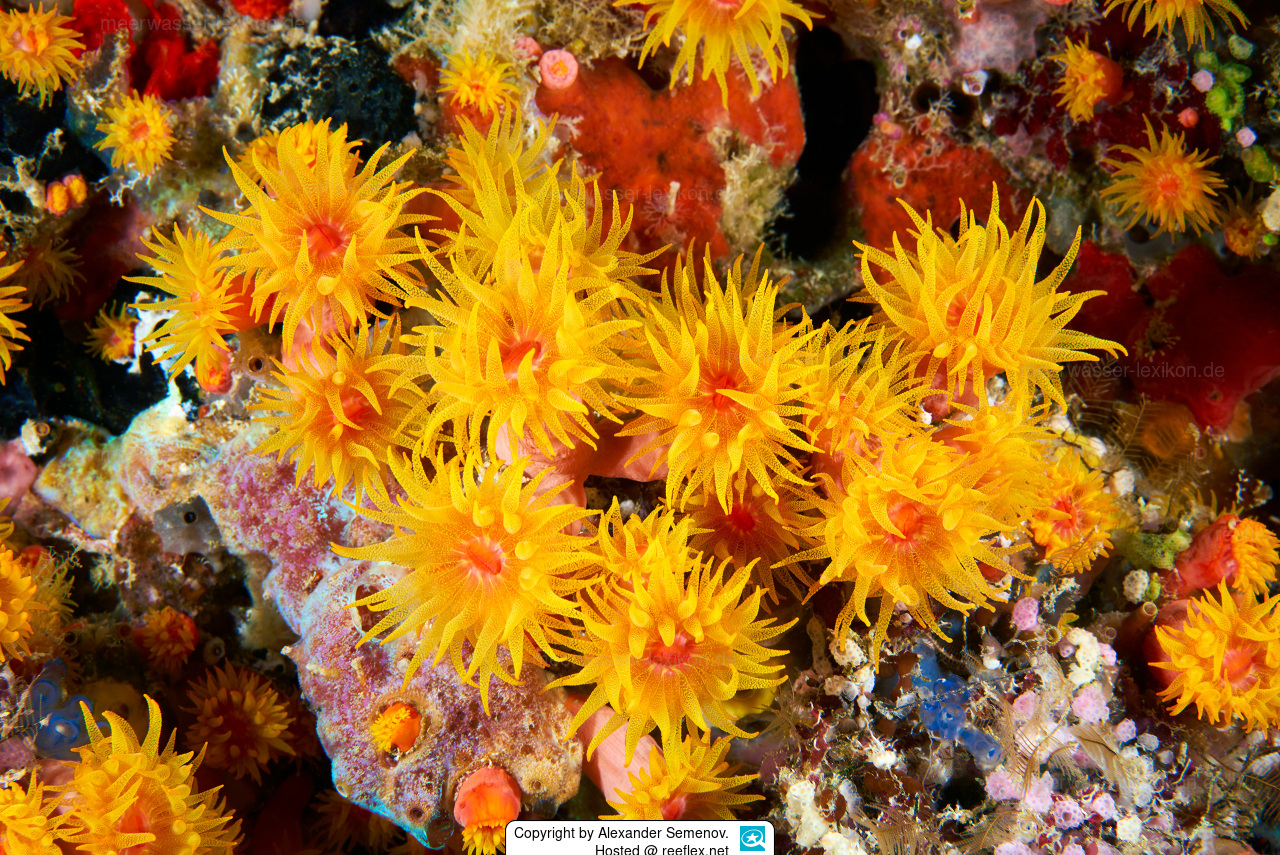Info
The pretty Yellow Sun Coral Tubastraea aurea is a nicely subdued color version of the Tubastraea genus. Another great photographic coral. The corallites of the T. aurea, the hard round, tubular structures that the polyps live in, are covered with a tissue called the coenosteum. The polyps have lightly colored tan or golden tentacles, with the center of the polyps being pale red-orange, and the coenosteum being yellow. It is similar to, yet a bit more delicate than, the slightly brighter Orange Sun Coral T. faulkneri, that has yellow polyps contrasted with bright orange centers and background.
Yellow Sun Corals extend their polyps tentacles mostly during the evening hours, though they can be coaxed out during the day if food is present. During the day the coral is completely withdrawn with only the yellow coenosteum being visible, making it look like a ball with raised round flat nubs. Other common names these corals are know for are Golden Cup Coral, Sun Coral, Sun Flower Coral, Tube Coral.
The Tubastraea genus can form colonies about the size of a fist in diameter. These will often grow on each other, forming a more complex and larger 'community'. Some branch into 40" (1 m) treelike structures. The Yellow Sun Coral can form colonies around 5" (13 cm) in diameter. They are slow growers, only adding about 1.6" of growth per year. The T. aurea are also ahermatypic, which means they don't contribute to reef building.
Lighting has no affect on the growth of the Yellow Sun Coral. They are referred to as azooxanthellate, or non-photosynthetic corals. This means that, unlike most other large polyp stony (LPS) corals, they do not have a symbiotic relationship with the marine algae zooxanthellae. They survive in the wild with foods such as plankton they take from the water column. Some species also eat small fish. Like soft corals, the T. aurea can also produce bio-active compounds. Some of these can be damaging to the larvae of some corals, but one of these compounds, called tubastrine, has anti-viral properties.
The Yellow Sun Coral can be easy to moderate to care for. If you want a really easy coral that only needs to be fed a few times a week and is low maintenance, it is best to leave this coral alone. The T. aurea can be easy to care for if the correct husbandry is followed. Yet they can be very difficult for the aquarist who does not have the time for daily feedings, adequate filtration, and regular substantial water changes..
The T. aurea have a voracious appetite and will multiply for you if you can keep up with their feeding requirements. Light will not harm the Yellow Sun Coral, but they do not have a very good defense against algae. Algae grows fast in lit areas, and if algae is allowed to grow on the T. aurea, it will die eventually. Strong water movement is a must. Putting the coral in areas under ledges that usually do not have the water flow they need, can also cause algae growth.
Synonymised names:
Australopsammia aurea (Quoy & Gaimard, 1833) · unaccepted > superseded combination
Coenopsammia aurea (Quoy & Gaimard, 1833) · unaccepted > superseded combination
Dendrophyllia aurea (Quoy & Gaimard, 1833) · unaccepted > superseded combination
Lobophyllia aurea Quoy & Gaimard, 1833 · unaccepted > superseded combination (basionym)
Lobopsammia aurea (Quoy & Gaimard, 1833) · unaccepted > superseded combination
Tubastrea aurea (Quoy & Gaimard, 1833) · unaccepted > misspelling - incorrect subsequent spelling (misspelling)







 Alexander Semenov, Russland
Alexander Semenov, Russland













